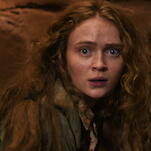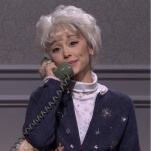The Astronaut Wives Club salutes the female astronauts that America wouldn’t
I’m an active feminist and a casual NASA fan, but up until I watched the fifth episode of The Astronaut Wives Club I had never heard of FLATs. The term stands for First Lady Astronaut Trainees and it refers to a group of real-life female pilots who had dreams of becoming astronauts back in the early 1960s. Through a privately funded program, 20 fearless women volunteered to undergo the same rigorous physical and psychological testing that had been conducted on the Mercury 7 candidates. They swallowed 3 feet of rubber hose, had ice water shot into their ears, were pushed to exhaustion on stationary bicycles, and had electric shocks sent into their arms. Thirteen of the women passed every single test—sometimes with better results than the men—and proved they were ready, willing, and able to train for space. The U.S. government, however, disagreed.
Frustration is a key emotion I felt during “Flashpoint,” but for once I was experiencing it with, not at, this imperfect ABC miniseries about the early days of NASA’s space program as experienced by the wives of the Mercury 7 astronauts. The episode acutely captures how maddening sexism is and how deeply it’s intertwined with history. None of the FLATs ever got to be astronauts. The first American woman wouldn’t travel to space for another 20 years.
The immensely compelling story speaks both to the bravery of trailblazing women and to the cultural attitudes of 1960s America. So why hasn’t it been told before?
Our historical fiction tends to focus on the people who made great achievements. We like winners, not losers. But the problem is that for most of Western history, the “winners” were almost exclusively white men. In order for our fiction to capture the true diversity of the human experience, we need to change our assumption about the kind of source material that makes interesting stories. After all, this FLATs plotline—though it ultimately centers on a bunch of historical “losers”—was one of the best parts of The Astronaut Wives Club.
It’s explored through the lens of Trudy Cooper (Odette Annable), a progressive astrowife. She’s a pilot who’s willing to maintain a sham marriage with her cheating husband Gordo just to be near NASA’s work on manned space flight. So when her old friend Dot Bingham (Mercedes Mason) shows up with news of the FLATs program and the upcoming hearing before a congressional subcommittee about whether it can continue, Trudy throws herself into the cause.
As with most of its storytelling, The Astronaut Wives Club plays fast and loose with the details of history but mostly gets the spirit of the thing right. In real life several members of the FLATs (otherwise known as the “Mercury 13”) did testify in front of a subcommittee, but none of them were friends with Trudy. Instead, Dot is a fictional character designed to bring Trudy directly into the story.
It’s a smart narrative choice if a dubious historical one. As played by Annable, Trudy is one of the more engaging characters on the series and one we’ve been rooting for since she first shared her dreams of seeing a woman in space in the show’s premiere episode. In “Flashpoint,” Trudy’s optimism is infectious. She explains that John Glenn and Scott Carpenter—the astronauts asked to speak at the hearing—are “two of the most open-minded guys in Mercury.” If she makes her case rationally, she’s confidant she can get them on her side.
The sticking point of the hearing is that NASA requires all astronauts to be test pilots. But since test-pilot training schools are run exclusively by the military, there’s no way for a woman to fulfill that requirement. The FLATs are arguing that their long careers as civilian pilots give them equivalent training to, and in many cases more flight hours than, male test pilots. (The show makes it seem like the women are campaigning to directly join NASA, but in real life the hearing was over whether the Mercury 13 could continue their testing on military equipment.)








































